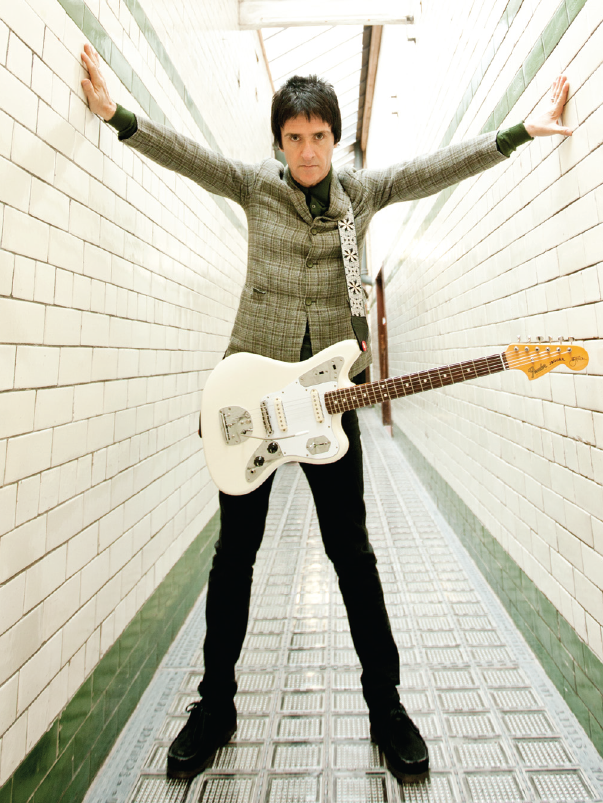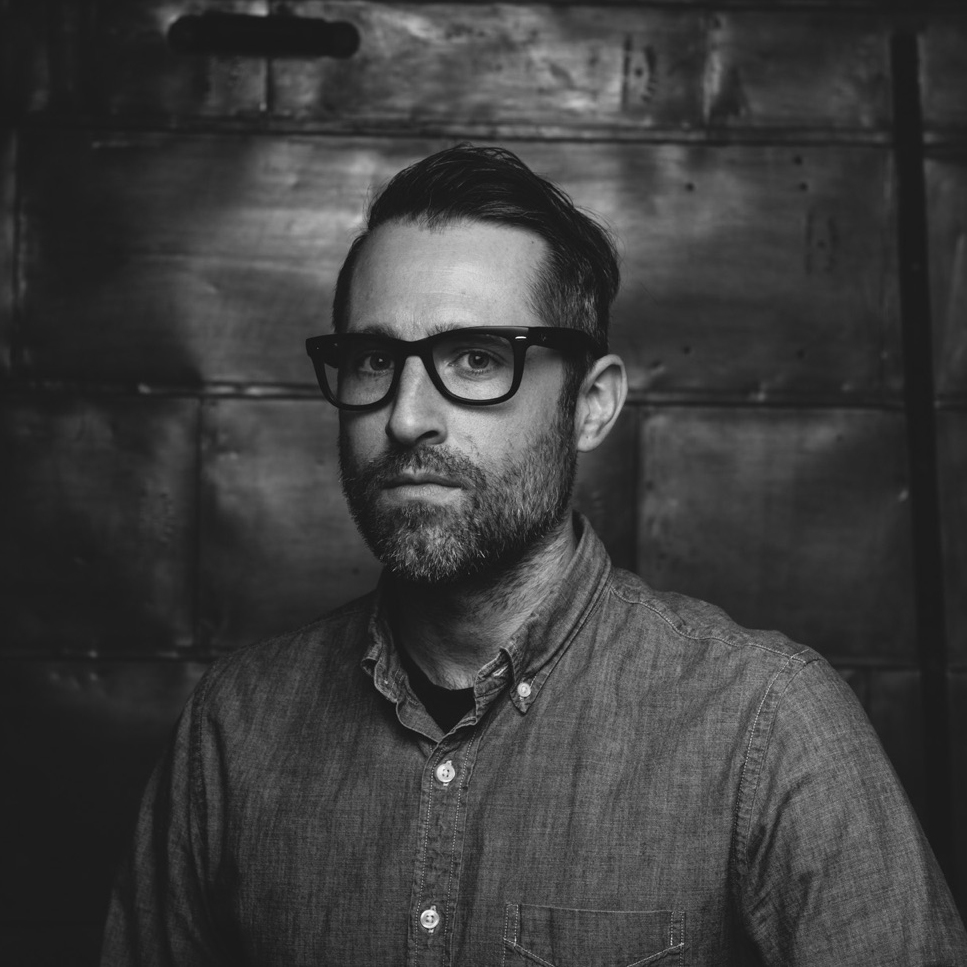Dear Guitar Hero: Johnny Marr Talks Guitars, 'Inception' Soundtrack, Working with John Frusciante and More

He forged new rock paths with the Smiths, released a successful new solo album and just got his own signature edition guitar. But what Guitar World readers really want to know is ...
You’ve had many amazing haircuts over the years that always seem to go perfectly with your instrument choice. Can you talk about the importance of having a look in rock and roll? — Andrew M.
[laughs] I maintain it’s my absolute prerogative to wear whatever hairstyle goes with my guitar at any point in my life. It amazes me when people make a big deal about people changing their hair. Surely that’s one of the bonuses of being in a band. When I was a kid, David Bowie was big, so that’s where it started for me.
Then I grew up watching bands like Siouxsie Sioux, the Birthday Party and Public Image Ltd. And I don’t think there was an ordinary haircut in the pack. I joined my first proper band around the time of new wave. Coming from where I came from [in Manchester] it was the law: You weren’t even allowed to plug in if your hair wasn’t at least halfway decent. [laughs] I’m still flying the flag and fighting the good fight, and I’m glad it’s being appreciated.
I heard that you got the crazy tremolo sound on [the Smiths’] “How Soon Is Now?” by having the engineers pick up and drop Fender Twin Reverb amps while you played them. Is there any truth in this and if not can you finally set the record straight? — Owen McDevitt
No, that is very wrong. [laughs] I think you may be confusing it with another story. On a few Smiths songs, like “This Charming Man” and “Stop Me If You’ve Heard This One Before,” I put a compressed Telecaster through a very loud Fender Twin with tremolo on and dropped big metal knives on the guitar. But for “How Soon Is Now?” the straight rhythm track was fed out from tape to a live room with me controlling two Fender Twins on one side and the producer, John Porter, controlling two Fender Twins on the other side.
The signal was going through the amps and we were both riding the vibrato on the amps by hand. We’d get 10 or 12 seconds in and one of us would look at the other and shake his head because it went out of sync. It’s a long song too; so it was a labor of love. The sound changes throughout the song in intensity and vibe, and I’m really glad digital recording wasn’t around back then because it would not have been as good.
Get The Pick Newsletter
All the latest guitar news, interviews, lessons, reviews, deals and more, direct to your inbox!
You said before that the Fender Telecaster was the ultimate guitar due to its simplicity, sturdiness and reliability. How do you make the more complex Jaguar work while handling frontman duties with the Healers? — Jacques K. Vignavong
I thought a lot about that aspect. When I first started playing Jaguars in 2005, they reminded me of the experience of driving a cool old vintage car. It’s exciting and a lot of fun, but you have to make sure the gearshift doesn’t go in the wrong gear or that one of the pedals doesn’t get pushed through the floorboards.
[laughs] At first I found that I was able to stay on top of the Jaguar when I wasn’t singing lead vocals. I’d be changing switches and tones while hoping the trem arm wouldn’t start whizzing around or that the entire circuit wouldn’t switch off accidentally.
As fun as it was, I couldn’t really see how I was gonna do all that as a lead singer, without lots of duct tape keeping everything in its place. But when I started going out on tour with the Healers, it was one of those things where I just had to become a better player. I had to make myself technically better to keep my tone right. But one thing that really helped was that I made sure my signature model couldn’t be switched off accidentally.
So let’s imagine [British prime minister] David Cameron actually decided that the coalition government would step down. [Marr stated at the 2012 NME Awards that the Smiths would reunite if the government stepped down.] When you reform the Smiths, what would be the first song you all play onstage? — Mike Matthews
Man. This is a total minefield for so many reasons. You’ll find out…when it never happens. [laughs] Which is a Smiths song in waiting if ever I’ve heard one: “You’ll Find Out When It Never Happens.” [laughs]
Tell me about working with Hans Zimmer on the Inception soundtrack. How did that challenge you as a guitarist? — Peter Finan
As a guitar player I used to think that you could approach soundtracks in an abstract fashion, perhaps because of Neil Young’s work on Dead Man. It seemed like there was a lot of scope for experimentation. That may be so, but my experience doing two different soundtracks—Inception and The Big Bang—taught me that there are two aspects that you absolutely have to follow.
The first is that you must be appropriate to the scene’s emotion, whether it’s sad, dramatic, tense, excited, erotic or whatever. The second is that you have to click with the director, because it’s his vision. Working with Hans was great, because he insisted on me being free to make it sound like me. The most challenging thing about the Inception pieces was that the parts were originally composed on a piano and written for 10 fingers to play.
Even though some of the parts sound simplistic, I had to really work it out by detuning and playing in weird positions. Then there were the odd time signatures and key changes to deal with. But I really love Hans’ voicings, so it was fun to work them out on guitar.
You have impeccable harmonic and melodic taste, but I read that you don’t have any knowledge of conventional notation and instead create your own mental system for chords. Can you talk about that process? — Zach Kochan
When I was a young teenager I learned music at school and got enough knowledge to understand what chords and keys were useful to me. But the crucial thing for me was that I never had a guitar teacher, and I was determined to learn from records: new wave and early Seventies stuff like Mick Ronson, Patti Smith, Television, Talking Heads and Nile Rodgers from Chic. When I was 12, I also used to love this one dumb disco record by Hamilton Bohannon.
And the only jazz musician that I liked for the longest time was McCoy Tyner. I loved his choice of chords. I think they were 11ths, but I knew them as McCoy Tyner chords. So I practiced, by ear, crossing McCoy Tyner chord changes with Bohannon rhythms. So I have systems like that, which come from weird subjective connections that I’ve made with records. “Girl Afraid” by the Smiths was me trying to play something like a Little Richard piano part. “The Headmaster Ritual,” which is done in odd chord voicings, was me trying to play a Joni Mitchell outro. As musicians I think it’s a really good thing to put two and two together and come up with five.
I love the tracks you did with John Frusciante on his album The Empyrean. John has such a distinct musical vision. What was it like collaborating with him? — Sophie Caley
John is always keen to avoid the obvious. He’s someone who’s very into emotion in music. He has idealism about sound. When I worked with him on that record, he struck me as someone who was always searching. He’s not at all blasé. If you’re hearing him playing a sound that is very clean, to John it’s the result of him looking for something that’s pure. Every sound he puts together is deliberate and meaningful to him.
When we did those songs he inspired me, so I worked very quickly. I would grab an acoustic, put it into a drone and play by ear without worrying about being too precise. I’d go with my feelings. Then for another song I’d grab a Strat and just do harmonics. He let me do a lot of textures. I don’t think it will surprise anyone to hear this, but John is a very deep guy.
You’re an incredibly active musician. But I’m wondering, when all that gets too hectic, what do you do to relax and clear your mind? — Julie Voit Levinson
I like what I’m doing, and I’m okay with hectic. But I’ll just put my hoodie up and go on a long run and listen to early Eighties electronic music, like The The, New Order, Bobby O and Giorgio Moroder. That’s served me really well, particularly on tour. If you wake up in some city at 5:30 in the morning and you want to see the sights, it’s a great way. Running around cities also gives me a keen appreciation of how lucky I am.
How else would you get to see Tokyo if you’ve gotta do a soundcheck, interviews and a show. I’ve seen more of the world this way in the last 10 years than the previous 20 combined.
Brad is a Brooklyn-based writer, editor and video producer. He is the former content director of Revolver magazine and executive editor of Guitar World. His work has appeared in Vice, Guitar Aficionado, Inked and more. He’s also a die-hard Les Paul player who wishes he never sold his 1987 Marshall Silver Jubilee half stack.
“Such a rare piece”: Dave Navarro has chosen the guitar he’s using to record his first post-Jane’s Addiction material – and it’s a historic build
“The best guitar player I ever heard”: Nashville guitar extraordinaire Mac Gayden – who worked with Bob Dylan, Elvis, Linda Ronstadt and Simon & Garfunkel – dies at 83





![[from left] George Harrison with his Gretsch Country Gentleman, Norman Harris of Norman's Rare Guitars holds a gold-top Les Paul, John Fogerty with his legendary 1969 Rickenbacker](https://cdn.mos.cms.futurecdn.net/TuH3nuhn9etqjdn5sy4ntW.jpg)





